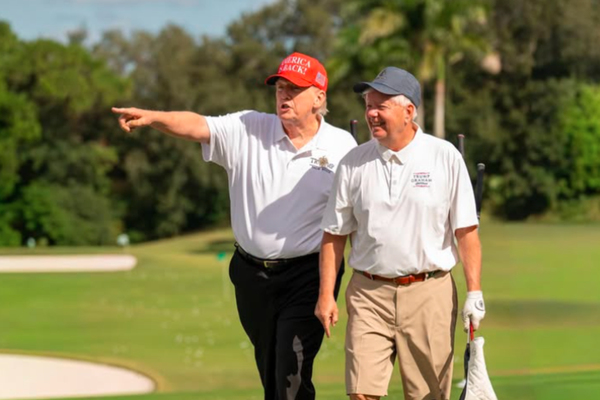
Much is made of vice presidential choices, and Democratic presidential nominee Kamala Harris’ selection of Minnesota Gov. Tim Walz is no different.
Well known for attacking Donald Trump and JD Vance as “weird,” Walz, 60, beat out a competitive field of Democratic options, including Pennsylvania Gov. Josh Shapiro, U.S. Sen. Mark Kelly of Arizona, Gov. Gretchen Whitmer of Michigan and Transportation Secretary Pete Buttigieg.
A moderate Democrat, Walz served as a U.S. representative from 2007 to 2019 and is considered an appealing option for potential independent voters.
Harris’ decision comes at a crucial time in the 2024 U.S. presidential election. With less than three months remaining, national polls suggest the race is very close – and Harris believes her choice of vice president will translate to votes in crucial swing states on Election Day.
The Conversation U.S. has published numerous stories on vice presidents and whether their selections helped or hurt presidential campaigns. Here are a few of them.
1. What do vice presidents actually do?
As political scientist Joshua Holzer noted, the U.S. Constitution has only a few references to the vice presidency.
Those references spell out that “the Vice President shall become President” if the president becomes incapacitated, and their main duties include serving as the president of the U.S. Senate who can vote only to break a tie.

But as Holzer points out, ties in the Senate have been rare. Since 1789, only 301 tiebreaking votes have been cast, and 12 vice presidents, including then-Vice President Joe Biden, never cast a single one. Harris holds the record with 33 tiebreaking votes.
“Other than staying out of trouble to avoid impeachment and waiting around to serve as – or replace – the president, vice presidents are really only obligated to occasionally cast a tie-breaking vote in the Senate,” Holzer wrote. “This means that the great majority of the time, vice presidents have no real job to do.”
John Adams, the first U.S. vice president, had a similar opinion. He once complained to his wife that the vice presidency was “the most insignificant Office that ever the Invention of Man contrived or his Imagination conceived.”
2. Do no harm
As a scholar who studies American politics, Philip Klinkner has explored how political considerations in selecting a vice president have changed over the years.
While there is little evidence that vice presidential candidates help their tickets, a bad pick can hurt the ticket. “Whether Harris decided to play it safe or go bold with her pick, the most important consideration was to do no harm,” Klinkner wrote.
With a bad pick, Klinkner explained, the issue isn’t whether the ticket is sufficiently balanced or diverse, but rather whether the candidate was adequately vetted.
“The worst picks – Tom Eagleton in 1972, Quayle in 1988 and Palin in 2008 – resulted from hasty and poorly thought out selection processes,” Klinkner wrote.
3. Trump’s choice
Karyn Amira is a political scientist whose research focuses on the relationship between Donald Trump, the Republican Party and conservatism.
Since Trump chose U.S. Sen. JD Vance of Ohio as his running mate, it’s been widely reported that Vance once described Trump as “morally reprehensible” and “cultural heroin,” and he privately compared him to Hitler.
But the day after Vance won his own Senate race in 2022, he reportedly made it known that he would support Trump for president in 2024 and now says that he would not have readily certified the 2020 election if he had been in Vice President Mike Pence’s shoes.
As Amira pointed out, Vance doesn’t represent a swing state. Nor does he have much appeal to MAGA-skeptical independent voters.
But people close to Trump call the 39-year-old Vance the new heir to Trump’s MAGA movement.
What can be concluded from Trump choosing Vance?
Since 2015, Amira explained, Trump has tightened his grip on the Republican Party, moving it further from its professed conservative ideology. “The choice of Vance as Trump’s running mate – and the competition that preceded it – are the latest steps in this process,” Amira wrote.
Read more: JD Vance's selection as Trump's running mate marks the end of Republican conservatism
Editor’s note: This story is a roundup of articles from The Conversation’s archives.
This article was originally published on The Conversation. Read the original article.







